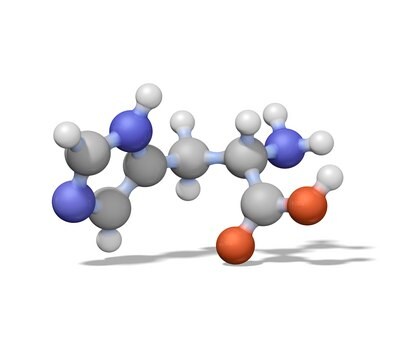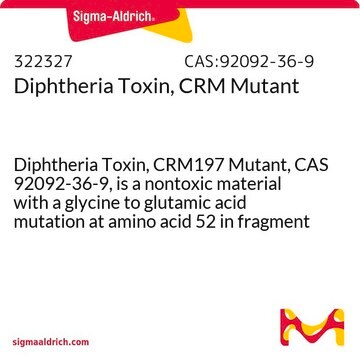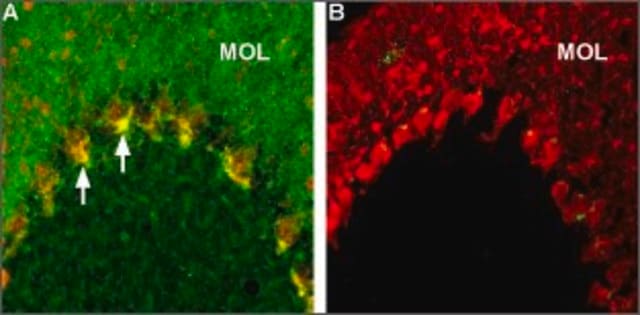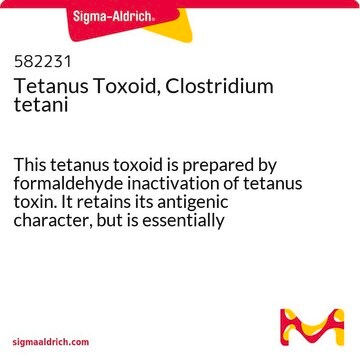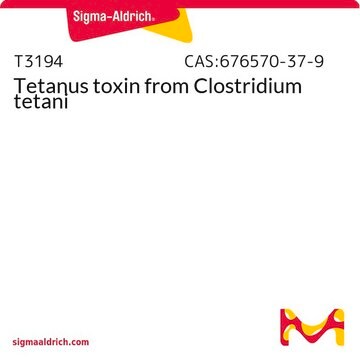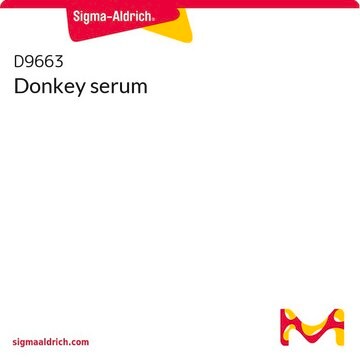This product is intended for laboratory or research use only, and no formal solution stability studies have been conducted. Before reconstitution, storage at 4°C in its original packaging is recommended, but specific duration guidelines are not provided. For reconstitution, use sterile distilled water to achieve a concentration of 1 mg of diphtheria toxin in 10 mM sodium phosphate with 5% lactose, pH 7.4. After reconstitution, unused toxin can be quick frozen in aliquots on dry ice and stored at -70°C. Thawing should be done quickly at room temperature. Repeated freezing and thawing or maintaining the preparation at 4°C for extended periods are not recommended, as these may lead to increased nicking. For assays using very low concentrations of the toxin, a carrier protein such as human serum albumin is suggested. The preparation migrates as a single major band under non-denaturing conditions, with a slower migrating band comprising less than 5% of the preparation, indicating an aggregate of diphtheria toxin. In the presence of a reducing agent, on SDS gels, the preparation shows a major band of approximately 63,000 daltons corresponding to the intact toxin, and two faster bands of approximately 39,000 and 24,000 daltons corresponding to the B and A fragments, respectively. The degree of nicking is estimated to be less than 5%. It is not recommended to store the solution frozen, and use within 1 month of resuspension is advised. The vial contains salts for TRIS and EDTA at pH 7.5.
D0564
Diphtheria Toxin
from Corynebacterium diphtheriae, ≥98% (SDS-PAGE), lyophilized powder, protein synthesis inhibitor
Sinónimos:
DTx
About This Item
Productos recomendados
Nombre del producto
Toxina de la difteria from Corynebacterium diphtheriae, lyophilized powder, Product is in unnicked form
Nivel de calidad
Formulario
lyophilized powder
temp. de almacenamiento
2-8°C
¿Está buscando productos similares? Visita Guía de comparación de productos
Descripción general
Aplicación
- para la merma de la microglía con objeto de estudiar el trastorno por estrés postraumático en ratones[1]
- inyectada intraperitonealmente en ratones transgénicos para seleccionar los híbridos después de la fusión de células madre y progenitoras hematopoyéticas trasplantadas (HSPC) durante la ablación[2]
- para estudiar su efecto sobre los progenitores comprometidos con el linaje de eosinófilos en una cepa de ratones con deficiencia de eosinófilos[3]
Acciones bioquímicas o fisiológicas
Forma física
Reconstitución
Palabra de señalización
Danger
Frases de peligro
Consejos de prudencia
Clasificaciones de peligro
Acute Tox. 1 Inhalation - Acute Tox. 1 Oral
Código de clase de almacenamiento
6.1A - Combustible acute toxic Cat. 1 and 2 / very toxic hazardous materials
Clase de riesgo para el agua (WGK)
WGK 3
Punto de inflamabilidad (°F)
Not applicable
Punto de inflamabilidad (°C)
Not applicable
Elija entre una de las versiones más recientes:
¿Ya tiene este producto?
Encuentre la documentación para los productos que ha comprado recientemente en la Biblioteca de documentos.
Los clientes también vieron
-
How long can the product be stored for at 4C in its original packaging? Before reconstitution? Furthermore, what should it be reconstituted with for best efficiency and long-term effectiveness?
1 answer-
Helpful?
-
-
How long is the lyophilized DT stable for if kept in its original packaging at 4C?
1 answer-
Products that are robust in nature and extremely stable, in the original unopened container, are not assigned an expiration date or retest schedule. These products will have no dating reported on either the label or the Certificate of Analysis. This product falls under that category. The specification sheet is available at this link: https://www.sigmaaldrich.com/specification-sheets/872/957/D0564-BULK________SIGMA____.pdf
Products that are not assigned an expiration or retest date are covered by a warranty period of 1 year from the date of product shipment.
Full Product Dating Information may be reviewed at the link below: https://www.sigmaaldrich.com/deepweb/assets/sigmaaldrich/marketing/global/documents/190/408/product-dating-information-ms.pdf
Helpful?
-
-
What is recommend for reconstituting the product for injection in mice via ip injection? The product instructions advise using sterile distilled water, but the product also contains Tris and EDTA. Most references and research articles recommend using PBS for reconstitution. I am concerned that water might be too hypotonic for the mice and may cause their cells to rupture, but I'm not sure whether the Tris and EDTA can prevent that.
1 answer-
No test has been conducted on this product for intraperitoneal injection. However, for intraperitoneal injection in mice, normal saline solution appears to be effective as a delivery solvent
Helpful?
-
-
What is the solubility of Product D0564, Diphtheria Toxin from Corynebacterium diphtheriae?
1 answer-
This product is soluble in water. Reconstitute with the volume of water described under Description on our website page for D0564.
Helpful?
-
-
How is Product D0564-1MG, Diphtheria Toxin, packaged?
1 answer-
Product D0564-1MG, Diphtheria Toxin, is packaged in a small serum vial with a rubber or silicone septum and aluminum crimp top. The product can be reconstituted in the vial by piercing the septum with a syringe fitted with a stainless steel needle.
Helpful?
-
-
How stable is Product D0564, Diphtheria Toxin from Corynebacterium diphtheriae, at low concentration?
1 answer-
For assays employing low concentration of the toxin, the use of a carrier protein like serum albumin is recommended.
Helpful?
-
-
What is the molecular weight of Product D0564, Diphtheria Toxin from Corynebacterium diphtheriae?
1 answer-
In the presence of a reducing agent, on SDS gels, this preparation migrates as a major band of approx. mw 63,000 Daltons (corresponding to thte intact toxin) and two faster more lightly stained bands of approx. MW 39,000 and 24,000 Daltons (corresponding to the B and A fragments, respectively). Based on this method, the extent of the degree of nicking in this preparation is estimated to be less than 5%.
Helpful?
-
-
What is the Department of Transportation shipping information for this product?
1 answer-
Transportation information can be found in Section 14 of the product's (M)SDS.To access the shipping information for this material, use the link on the product detail page for the product.
Helpful?
-
-
What is the solution stability of Product D0564, Diphtheria Toxin from Corynebacterium diphtheriae?
1 answer-
Once the product is reconstituted in water, the solution may be stored in aliquots at -20°C. Avoid freeze-thawing. Long-term storage in the refrigerator at 2-8°C is not recommended.
Helpful?
-
Active Filters
Nuestro equipo de científicos tiene experiencia en todas las áreas de investigación: Ciencias de la vida, Ciencia de los materiales, Síntesis química, Cromatografía, Analítica y muchas otras.
Póngase en contacto con el Servicio técnico